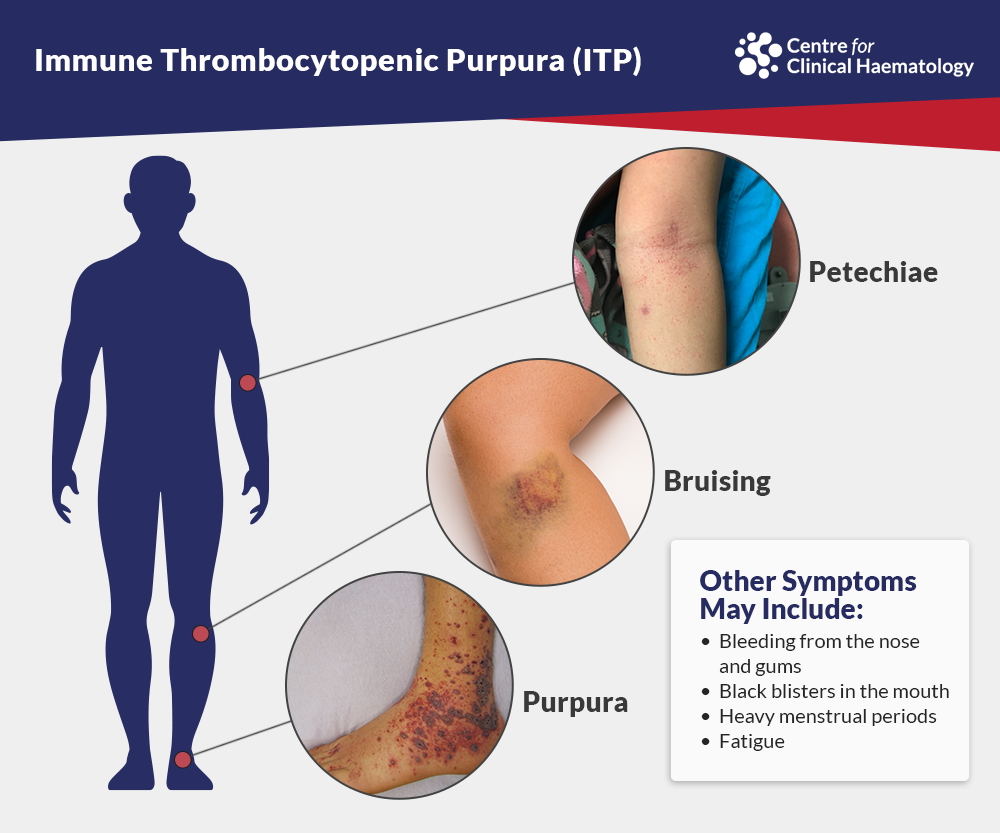
What is Immune Thrombocytopenic Purpura (ITP)?
Immune thrombocytopenic purpura ITP Diagnosis. In autoimmune disorders your body makes proteins called antibodies which damage another part of your body. In Immune Thrombocytopenic Purpura (ITP) the antibodies are made against platelets. Once the antibodies have attached to platelets, the platelets do not work so well. They are also removed more quickly by the spleen because they are abnormal.
Thalassemia symptoms depend on the type of thalassemia you have and how severe the anemia becomes. Some people have little or even no symptoms. Other people have mild to severe symptoms. Symptoms of thalassemia may include one or more of the following:
Common symptoms of white blood cell disorders are:
- It is called 'immune' because it is now known that a problem with the immune system is the cause
- Thrombocytopenic, or thrombocytopenia, means not having enough platelets
- Purpura is a purple-red rash. It is caused by tiny bleeds under the skin
- ITP is quite different in children and adults and should be considered separately
Understanding platelets:
Platelets are tiny components of the blood which help blood to clot when we injure ourselves. They are also known as thrombocytes. They are made inside bone, in the bone marrow. They are released into the bloodstream and travel through the body for about seven days, before they are removed by the spleen. The spleen is an organ that lies at the top of the tummy (abdomen) under the ribs on the left-hand side. A normal number of platelets is between 1,50,000 and 4,50,000. This is found by a blood test. If you have too many platelets, your blood will clot too easily. If you do not have enough platelets, you may bruise and bleed more easily than usual immune thrombocytopenic purpura in children.
 Dr. Girish Badarkhe
Dr. Girish Badarkhe